
Why Do Woodpeckers Peck Wood: Understanding Their Behavior
Introduction
Woodpeckers are fascinating birds known for their unique pecking habits. Their rhythmic tapping can be heard echoing through forests. Understanding why woodpeckers peck wood is important for appreciating their role in nature. This article aims to uncover the reasons behind this distinctive behavior and its ecological significance.
Summary and Overview
Woodpeckers play a crucial role in their ecosystems. They inhabit diverse environments, from dense forests to suburban areas. There are approximately 250 species of woodpeckers worldwide, each with unique traits. Woodpeckers peck wood primarily for three reasons: foraging for food, creating nesting sites, and communicating with each other. Their powerful beaks and specialized tongues make them adept at extracting insects from trees. Additionally, their unique adaptations allow them to thrive in various habitats. Understanding these behaviors helps us appreciate these remarkable birds and their contributions to the environment.
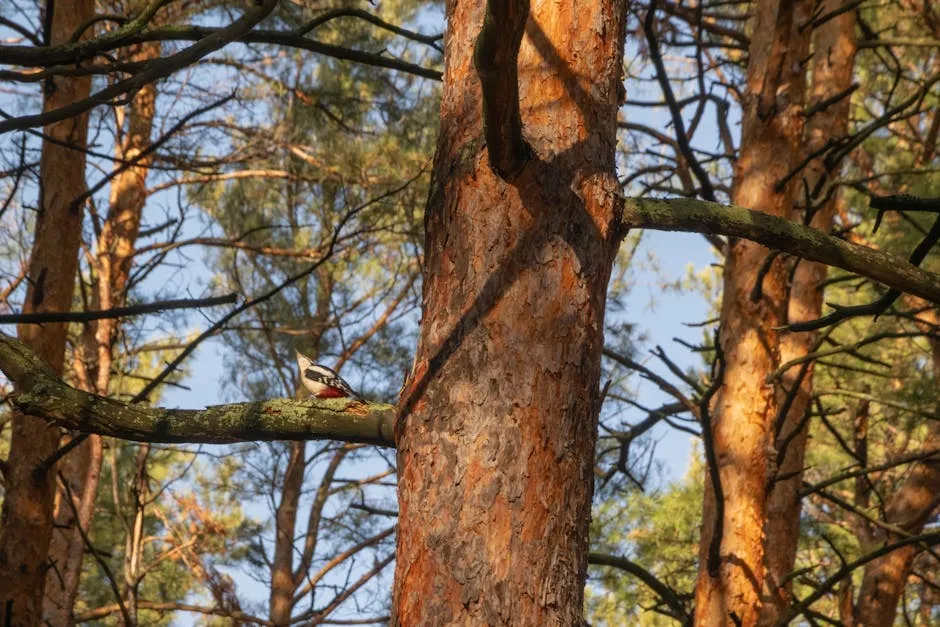
If you’re a birdwatching enthusiast, you’ll want to enhance your experience with some quality Birdwatching Binoculars. Imagine spotting a woodpecker in action, its vibrant colors and unique markings visible through high-quality optics. These binoculars can make all the difference in your birdwatching adventures!
The Main Reasons Woodpeckers Peck Wood
Foraging for Food
Woodpeckers primarily peck wood to search for food. Their strong beaks allow them to drill into tree bark, revealing hidden insects and larvae. They particularly enjoy wood-boring insects like carpenter ants and termites. These critters make for a delicious meal.
Interestingly, some woodpeckers, like sapsuckers, have a unique feeding behavior. They create small holes in tree bark to access the sweet sap inside. This sap attracts insects, providing an additional food source.
On average, woodpeckers can peck up to 20 times per second! Over a day, they might hit a tree 8,000 to 12,000 times. This impressive pecking rate showcases their determination to find food. By listening for sounds of movement beneath the bark, they effectively locate their meals.
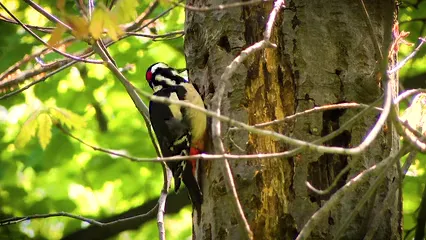
Enhance your birdwatching experience by documenting your observations in a Nature Journal for Bird Watching. It’s a great way to keep track of the different species you encounter and their behaviors while providing a creative outlet for your thoughts and sketches!
Nesting Habits
Woodpeckers are also skilled architects. They create nesting cavities in trees, usually in dead or dying wood. This pecking behavior is crucial for their reproduction. The holes they carve provide safe spaces for their young to grow.
These cavities aren’t just homes for woodpeckers. Many other bird species, like nuthatches and wrens, use abandoned woodpecker holes for nesting too. This behavior highlights the ecological impact of woodpecker nesting habits.
Typically, woodpeckers begin their nesting season in late April to early May. During this time, they carefully select suitable trees and excavate cavities. Research shows that nesting success rates among woodpecker species can vary significantly, depending on environmental conditions. Overall, their nesting architecture plays a vital role in maintaining biodiversity in forest ecosystems.
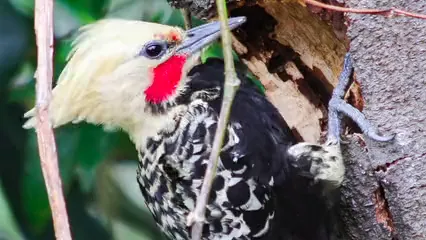
If you want to attract these amazing birds to your yard, consider setting up a Bird Feeder. This will provide them with a reliable food source and give you a front-row seat to their delightful antics!
Communication and Territory Marking
Woodpeckers use their rhythmic drumming to communicate and establish territory. This drumming is vital during mating season, as it signals their presence to potential mates. Have you ever noticed how their pecking sounds seem to echo through the forest? This is no coincidence. Male woodpeckers drum on various materials, including wood and metal, to amplify their calls.
The sound carries farther when they use harder surfaces, making it easier for females to hear them. Imagine a Northern Flicker drumming on a metal pole; the noise can be quite impressive! Drumming serves not only to attract mates but also to ward off rival woodpeckers. This behavior is crucial during the breeding season when territory disputes are common.
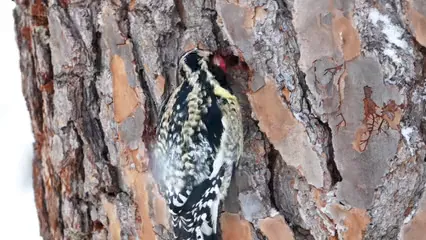
Different woodpecker species have unique drumming patterns. For example, the Downy Woodpecker has a rapid, high-pitched rhythm, while the Pileated Woodpecker produces a deeper, more resonant sound. These vocalizations play a significant role in their courtship behavior, showcasing their fitness and dominance in the area.
Beak Structure and Function
Woodpeckers possess a unique beak structure that is essential for their pecking behavior. Their chisel-like beaks are designed to penetrate bark and wood efficiently. This adaptation allows them to forage for insects and create nesting cavities effectively.
The beak serves multiple purposes. When searching for food, woodpeckers use their bills to drill into trees, extracting larvae and insects hidden beneath the surface. This feeding adaptation is vital for their survival. The beak also plays a crucial role in nesting. By pecking into trees, woodpeckers create safe spaces for their young.
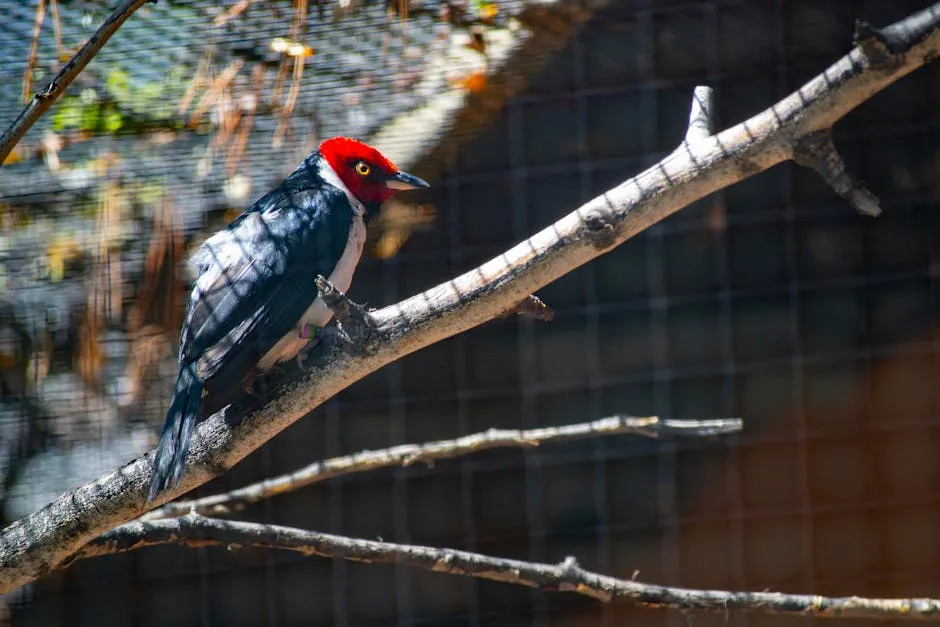
Interestingly, the beak’s design has evolved over time. It features a hard outer layer that protects it from wear and tear. The inner structure is softer, which helps absorb shock during pecking. This impressive anatomical feature enables woodpeckers to engage in their unique behaviors without injury. Overall, their beak adaptations exemplify the evolutionary traits that support their lifestyle.
Shock Absorption Mechanisms
Woodpeckers are remarkable for their ability to peck wood without injuring themselves. How do they manage this? Their cranial structure plays a vital role. Woodpeckers possess a unique skull design that includes a spongy bone structure. This adaptation helps absorb impact forces when they peck at high speeds.
Studies show that woodpeckers can strike a surface with a force reaching up to 1,200 g’s. In comparison, this is roughly 20 times the force experienced by a human during a car crash! To protect their brains, woodpeckers have a fluid-filled cavity between their skull and brain. This acts like a cushion, reducing the vibrations caused by pecking.
Additionally, their long, flexible tongues are anchored to their skulls, preventing injury during intense pecking sessions. Some species can peck up to 12,000 times a day! These physiological adaptations have evolved over time, allowing woodpeckers to thrive in their environments while minimizing the risk of concussions or other injuries. Their extraordinary ability showcases the wonders of evolutionary biology.
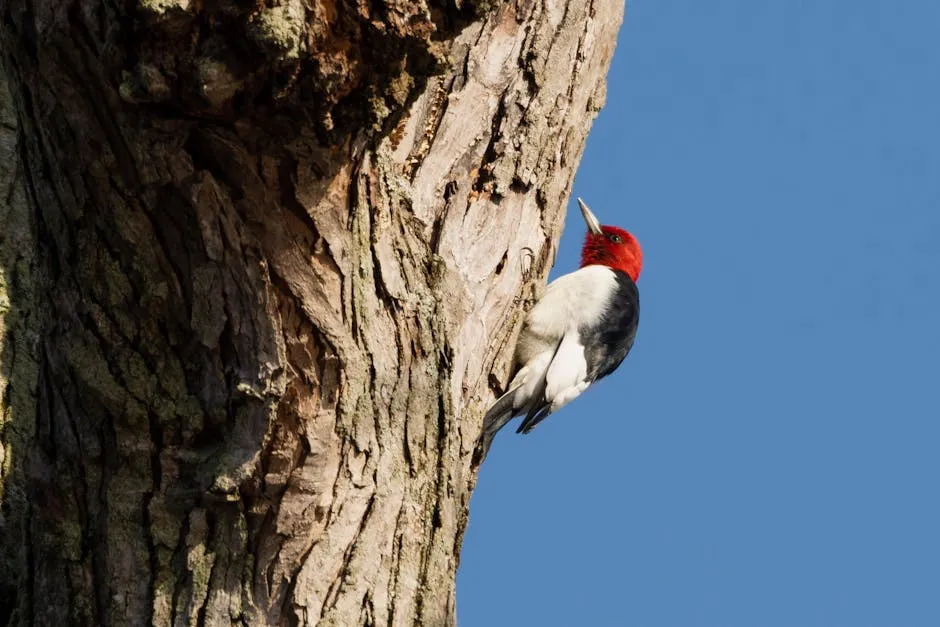
Distribution and Habitat Preferences
Woodpeckers are found across the globe, with about 250 species identified. They inhabit diverse ecosystems, from dense forests to urban areas. These birds prefer habitats with abundant trees, which provide food and nesting sites. South America and Southeast Asia are hotspots for woodpecker diversity.
In North America, species like the Downy and Pileated Woodpeckers adapt well to various environments, including parks and gardens. Some woodpecker species exhibit migratory behavior, moving to warmer climates during colder months. This migration helps them access food sources as seasons change.
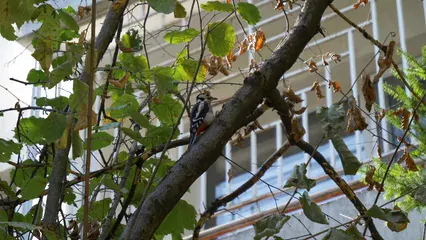
Woodpeckers play essential roles in their ecosystems. By pecking into trees, they help control insect populations, and their nesting cavities provide homes for other bird species. Habitat conservation is crucial for ensuring the survival of these unique birds, as they depend on healthy forests for their ecological roles. Protecting their habitats contributes to overall biodiversity and supports various wildlife. Learn more about urban habitats and their significance.
To enhance your outdoor experience, consider investing in a Hiking Backpack. This will help you carry all your birdwatching essentials, including your journal, binoculars, and snacks for those long days in the field!
Human-Woodpecker Interactions
Why Woodpeckers Peck on Homes
Woodpeckers may peck at human structures for various reasons. First, they often search for food like carpenter ants and termites hiding within the wood. This behavior can lead to significant property damage, particularly in homes with wooden siding. In fact, some homeowners report damages costing hundreds to thousands of dollars for repairs.
Additionally, woodpeckers may drum on homes to establish territory or attract mates. The noise they produce can be quite loud, causing frustration for residents. In some cases, woodpeckers cause holes that compromise the integrity of the structure, leading to further issues. Understanding this human-wildlife conflict is essential for effective pest control and wildlife management.

Statistics show that over 30% of woodpecker-related damage is reported in urban areas. This highlights the need for effective woodpecker deterrents and strategies to minimize conflicts while respecting these unique birds.
For those looking to deter these persistent peckers, consider using a Squirrel Proof Bird Feeder. It can help reduce the appeal of your home as a food source, encouraging them to seek out more natural dining options.
How to Deter Woodpeckers
To prevent woodpecker damage, several effective deterrent methods can be employed. First, consider installing reflective surfaces, such as aluminum foil or shiny tape, around areas they frequent. The light reflections can disorient woodpeckers, encouraging them to seek food elsewhere.
Another approach is using bird deterrents like sound devices or motion-activated sprayers, which can humanely deter woodpeckers. Additionally, providing alternative roosting sites, such as nesting boxes, may help redirect their activities away from your home.
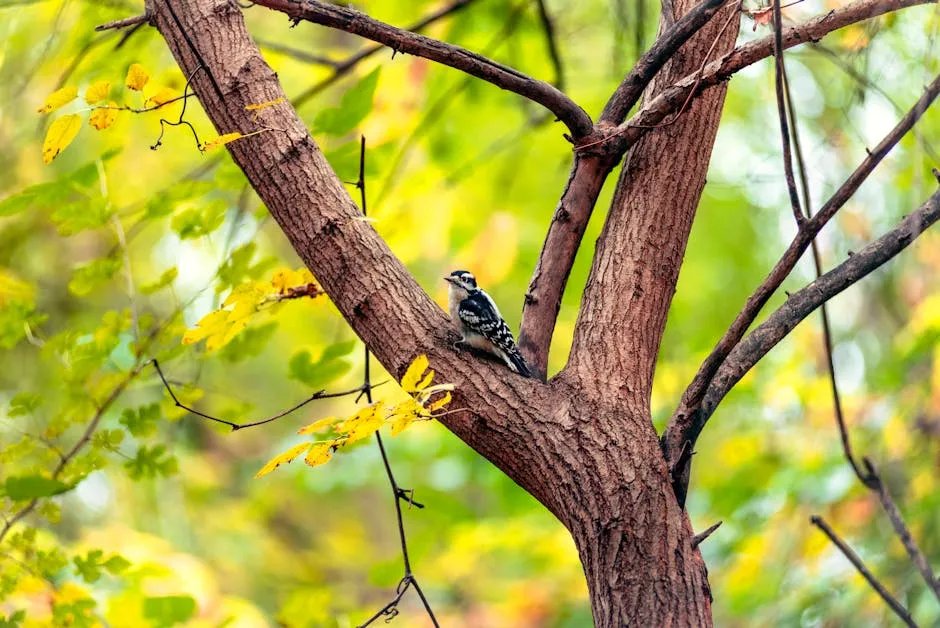
Remember, it’s important to use humane methods to manage woodpecker interactions. Creating a coexistence strategy can benefit both homeowners and woodpeckers. By observing these birds from a distance, you can appreciate their unique behavior while protecting your property.
Conclusion
Woodpeckers peck wood for vital reasons, including foraging for insects, nesting, and communication. Their ecological importance cannot be overstated. By understanding these behaviors, we can better appreciate woodpeckers and the roles they play in our ecosystems. It’s essential to preserve their habitats and promote coexistence. So, take a moment to observe these incredible birds — they are truly remarkable!
Understanding the importance of effective communication can also help in appreciating how woodpeckers interact within their ecosystems. why does effective communication matter in overcoming glossophobia
For those planning to venture out, don’t forget to pack your First Aid Kit for Outdoor Adventures. It’s always better to be prepared!
Please let us know what you think about our content by leaving a comment down below!
Thank you for reading till here 🙂
All images from Pexels




